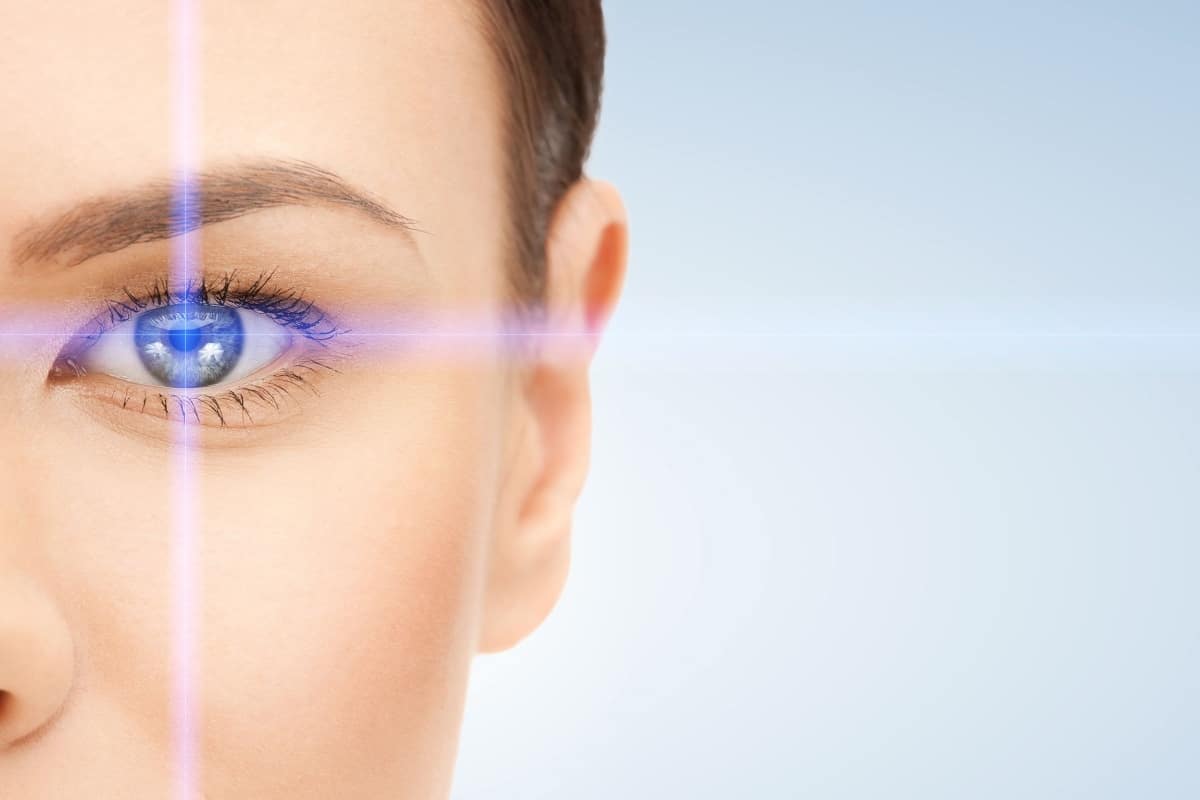Macular degeneration is the most common eye condition among adults over the age of 50. According to the Macular Degeneration Association, macular degeneration is the leading cause of legal blindness in Americans age 65 and older and approximately 11 million people in the US suffer from the disease. At Eye Clinic of Austin, we are highly trained in how to diagnose and slow the disease with treatment.
To order supplements, please visit our Macuhealth online store.
What is Macular Degeneration?
Macular degeneration is a genetic disease occurring more frequently with aging in which the macula deteriorates. The macula is responsible for detailed vision and is the central part of the retina. As the macula deteriorates, central vision is affected; however, peripheral vision remains clear. For example, a person with advanced macular degeneration can see the outline of a clock but cannot tell what time it is.
Types of Macular Degeneration
The three stages of macular degeneration are subclinical macular degeneration, dry macular degeneration and wet macular degeneration. All typically develop in patients over the age of 50.
Subclinical Macular Degeneration
Subclinical macular degeneration is the earliest detectable stage of macular degeneration. It is found by detecting longer than normal time to adjust from bright light to darkness or prolonged Rod Intercept (RI) using the Adapt DX. This stage can be detected 3 to 5 years before the first drusen are detected in dry macular degeneration. Earlier detection allows earlier intervention to slow or possibly halt the progression of the disease.
Dry Macular Degeneration
Dry macular degeneration is the most common of the two types and consists of a gradual breakdown of macula cells. Eye doctors recognize the dry type by multiple small yellow-white spots called drusen, which appear in the back of the eye at the outer retina.
Dry macular degeneration develops slowly, and there is no treatment to reverse damage done by the disease, only to slow the progression. Thus, it is imperative to schedule regular eye exams as you age, especially if you have a family history of eye disease.
Wet Macular Degeneration
The less common, wet or exudative macular degeneration occurs when abnormal blood vessels form under the central retina. Vision destruction and distortion begin when these blood vessels leak, bleed, and scar the retina. Vision loss caused by wet macular degeneration typically occurs fairly rapidly. Affecting only about 15% of people who have macular degeneration, if the wet form is caught early enough, various forms of treatment by a retinal specialist can improve and stabilize vision.
Causes
Macular degeneration typically occurs in individuals who are over the age of 50. As we age, the risk increases. Other risk factors include smoking, race, and family history. Research has shown that a history of smoking increases the risk for macular degeneration two-fold. Caucasians are more likely to get macular degeneration, and people with a family history of the disease are also at a higher risk.
Symptoms
Dry macular degeneration is hardly noticed by most patients in the early stages of development and that is why it is so very important to schedule regular comprehensive eye exams. As the disease progresses, the most common symptoms are blurred vision and objects appearing duller or less bright than usual. Many people have issues recognizing faces or need more light to read.
Wet type macular degeneration symptoms have a quicker onset than the dry type. Typically, patients develop a central vision blind spot, and many patients see straight lines as appearing to be wavy.
Diagnosis & Treatment
Once discovered, both dry and wet macular degeneration should be treated right away to prevent further vision loss. An ophthalmologist diagnoses the disease with a complete eye exam including simple, in-office tests while the pupils are dilated.
Despite ongoing medical research, there is no cure for dry macular degeneration. Nutritional supplements such as specific vitamin, mineral, carotenoid and essential fatty acid supplementation has been shown to reduce progression by 30%.
For wet macular degeneration, injection of advanced medication may prevent major vision loss or improve or stabilize vision in many cases. When vision is significantly decreased, special visual aids and magnifiers may be helpful.
Despite medical treatment, people with macular degeneration still experience vision loss. At Eye Clinic of Austin, our eye doctors can help select optical and non-optical devices to aid in daily activities. While the vision loss cannot be reversed, we work to help people maintain their quality of life.
At Eye Clinic of Austin, we believe in utilizing the best technology available for the diagnosis of macular degeneration. Below are just some of the tests we administer at a typical exam for an individual who has or may have macular degeneration.
AdaptDx
Eye Clinic of Austin is among the first in the country to offer patients a new FDA-cleared test called AdaptDx, which detects AMD in its earliest stages.
This simple, non-invasive test measures the number of minutes it takes your vision to adjust from bright light to darkness. This number is your RI, or Rod Intercept. Your RI provides our team with critical information to help determine if you have age-related macular degeneration (AMD).
Performed in a darkened room, the test is easy to take and non-invasive. The test does not require dilation of your pupils and nothing will touch your eye. During the test, you will watch for a series of lights and be asked to click a button each time you see them. Your results are provided immediately, so Dr. Henderson or Dr. Irshad can discuss the findings and any next steps that may be required.
Optomap
The Optomap is a scanning laser ophthalmoscope that non-invasively generates a high-resolution digital color image of the retina, which allows the eye doctors to enhance the image to magnify some of the finer details.
OCT (Optical Coherence Tomography)
OCT is a type of imaging technology that provides cross-sectional pictures of the retina. Because all ten layers of the retina can be seen, OCT offers the eye doctor a way to measure thickness of each layer. Over time, taking these images at each eye appointment is a way to monitor macular degeneration development. The test is non-invasive, very short, and the images are immediately available for the doctor’s review.
MPOD (Macular Pigment Optical Density)
Research has found that many people who have low macular pigment can have a higher risk of developing age-related macular degeneration. The MPOD exam measures the macular pigment density of a patient’s eye. It is a non-invasive, simple exam which can be one of the many tools Eye Clinic of Austin uses in diagnosing macular degeneration.
Genetic Testing
Genetic testing can also be used to help assess the risk of development of age-related macular degeneration. At Eye Clinic of Austin, we swab the interior of the cheek and then send that to a company which will analyze the patient’s DNA for particular risks for AMD. The categories of risk are from 1 to 5. Once the results come back to Eye Clinic of Austin, we then review those with the patient and determine next steps.
Testimonials
Eye Care Blog

Ensuring the health and well-being of our eyes demands careful attention and proactive measures. Among the most critical actions we can take is the use of sunglasses to shield our eyes from the sun’s damaging UV rays. This simple yet effective strategy plays a pivotal role in preventing potential harm and preserving our eye health […]

Prevent Eye Injuries This Spring with Protective Eyewear Spring welcomes warmer weather and longer days, enticing many to indulge in outdoor activities. However, this season also poses potential risks for eye injuries. Understanding the significance of protective eyewear is crucial for those with sensitive eyes. At Eye Clinic of Austin, our team is committed […]

In an evolving healthcare landscape, in-office surgery has become an appealing alternative to traditional hospital-based procedures, particularly for patients seeking quality eye care and various eye surgeries, such as corneal transplants or treatment for glaucoma. At Eye Clinic of Austin, our skilled eye doctors address concerns that are related to a range of eye conditions […]







